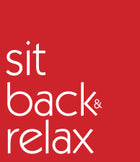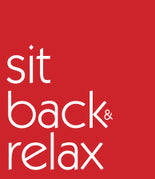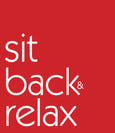In today's modern work environment, the question of whether to sit or stand while working has become a hot topic. With the rise of ergonomic furniture and adjustable desks, employees now have the option to choose between sitting and standing throughout their workday. In this article, we will delve into the benefits of both sitting and standing at work, helping you make an informed decision about what works best for you.
Benefits of Sitting at Work:
-
Comfort and Relaxation: Sitting provides a level of comfort and relaxation that can be beneficial for tasks that require concentration and focus. It allows your body to fully rest and reduces the strain on your muscles and joints.
-
Stability and Support: A properly designed ergonomic chair offers stability and support for your back, promoting good posture and reducing the risk of back pain. Sitting in a well-adjusted chair with lumbar support can alleviate pressure on the spine and provide a stable foundation for your work.
-
Fine Motor Skills and Precision: Certain tasks, such as detailed computer work, drafting, or intricate assembly, may require precise movements. Sitting can provide a steady hand and enhanced control over fine motor skills, allowing for increased precision and accuracy.
-
Collaboration and Communication: Sitting at a desk promotes face-to-face interaction and collaboration with colleagues. It creates a conducive environment for team discussions, brainstorming sessions, and spontaneous conversations, fostering better communication and camaraderie.
-
Versatility: Sitting allows for easy integration of various accessories and equipment. You can comfortably use a keyboard, mouse, and other tools without the limitations of height or stability that may come with standing positions.
Benefits of Standing at Work:
-
Improved Blood Circulation: Standing promotes better blood circulation throughout the body, preventing the negative effects associated with prolonged sitting, such as poor leg circulation and increased risk of blood clots. It keeps your muscles engaged and helps deliver oxygen and nutrients to various body parts.
-
Increased Energy and Alertness: Standing can boost energy levels and enhance alertness, making you more focused and productive during tasks that require active engagement. It can combat the lethargy and mid-afternoon slumps commonly experienced when sitting for extended periods.
-
Core Activation and Postural Strength: Standing engages your core muscles, promoting better posture and strengthening your back, abdomen, and leg muscles. This can help alleviate chronic lower back pain and improve overall musculoskeletal health.
-
Calorie Expenditure and Weight Management: Standing burns more calories compared to sitting, albeit in a modest amount. Over time, this can contribute to weight management and even help reduce the risk of obesity and related health conditions.
-
Movement and Flexibility: Standing encourages frequent movement, allowing you to shift your weight, stretch, and adopt different postures. This constant motion can reduce the strain on specific muscle groups and joints associated with prolonged sitting.
-
Spontaneous Collaboration and Engagement: Standing desks can foster a more open and interactive workspace. They promote impromptu discussions, quick exchanges of ideas, and spontaneous collaboration, as individuals can easily move between workstations.
Conclusion:
The debate between sitting and standing at work ultimately boils down to personal preference and individual needs. Both sitting and standing offer unique benefits that can contribute to your overall well-being and productivity.
For tasks requiring precision, stability, and prolonged focus, sitting in an ergonomic chair with proper support may be the ideal choice. On the other hand, standing can provide increased energy, movement, and collaboration opportunities.
A well-balanced approach is often the best solution. Consider a sit-stand workstation that allows you to transition between sitting and standing throughout the day. This way, you can reap the benefits of both positions and find a healthy balance that works for you.
Remember, regardless of your choice, it's essential to prioritize ergonomics, take regular breaks, and incorporate physical activity into your routine. Listen to your body's signals, experiment with different setups, and consult with ergonomic specialists or healthcare professionals if needed.
Ultimately, the key lies in finding what keeps you comfortable, engaged, and productive while promoting a healthy work environment.



